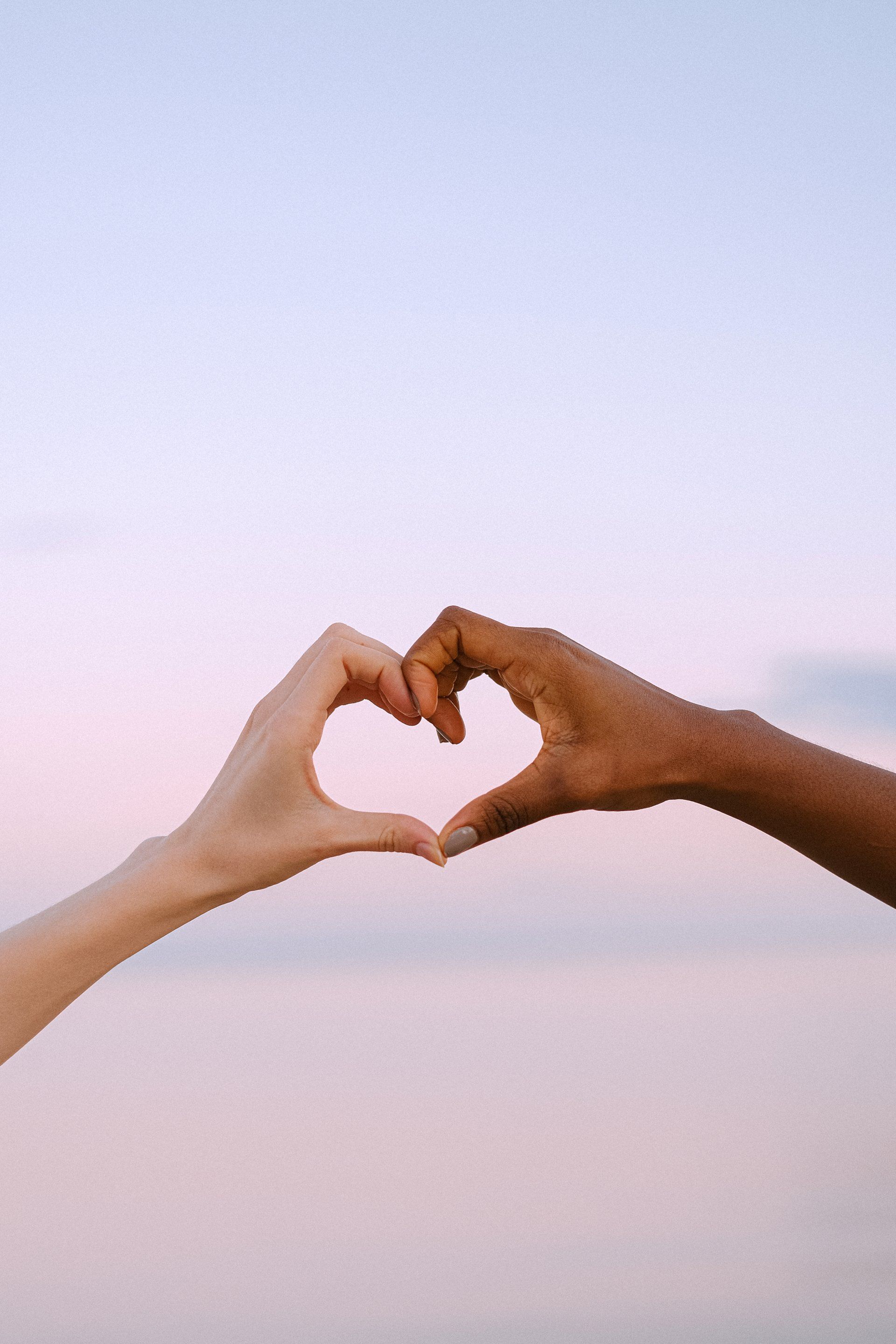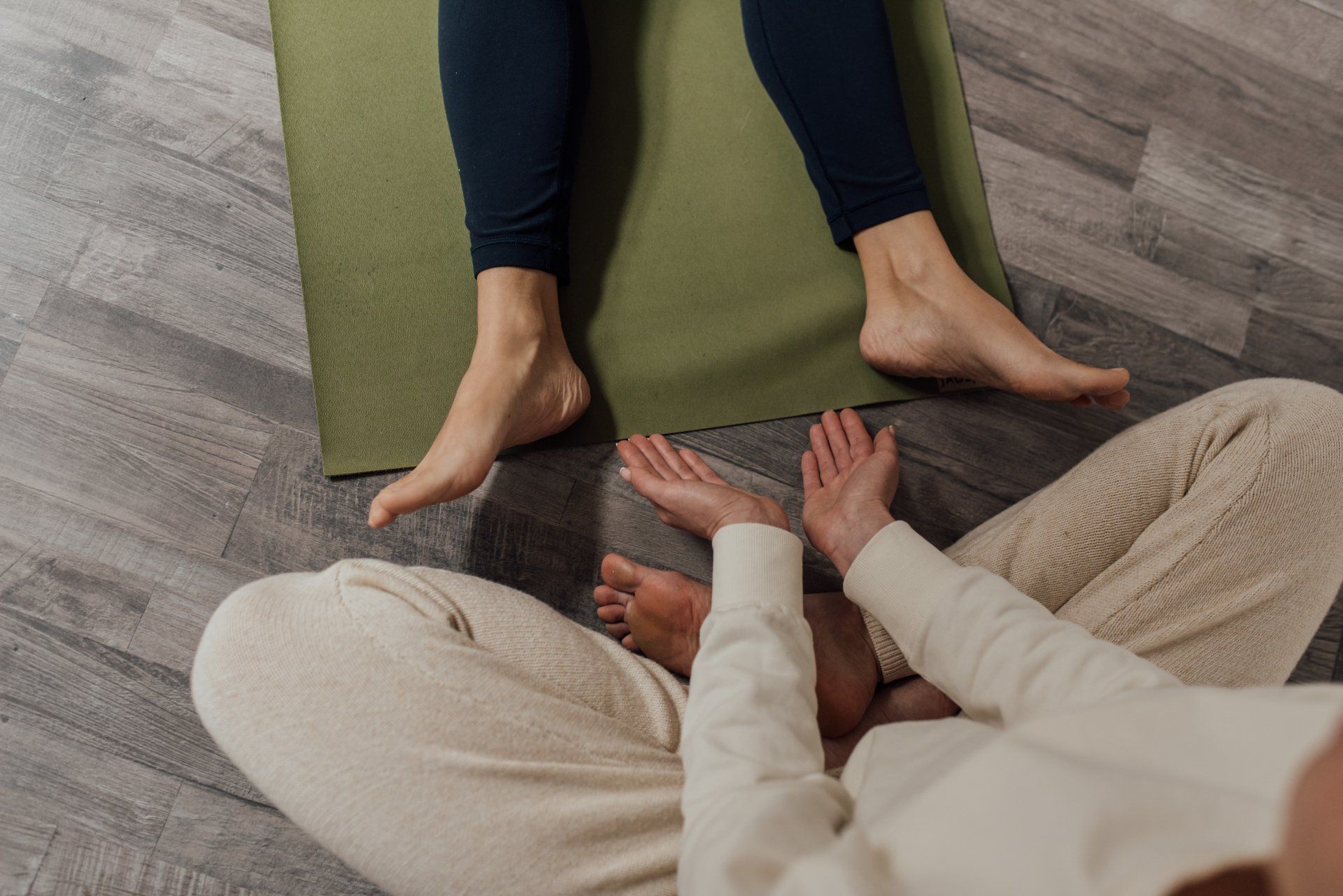Eating Disorder Coaching, Personalized Yoga and Reiki Healing
Yoga for Anxiety
Do This Yin Yoga Sequence Daily to Curb Anxiety Symptoms
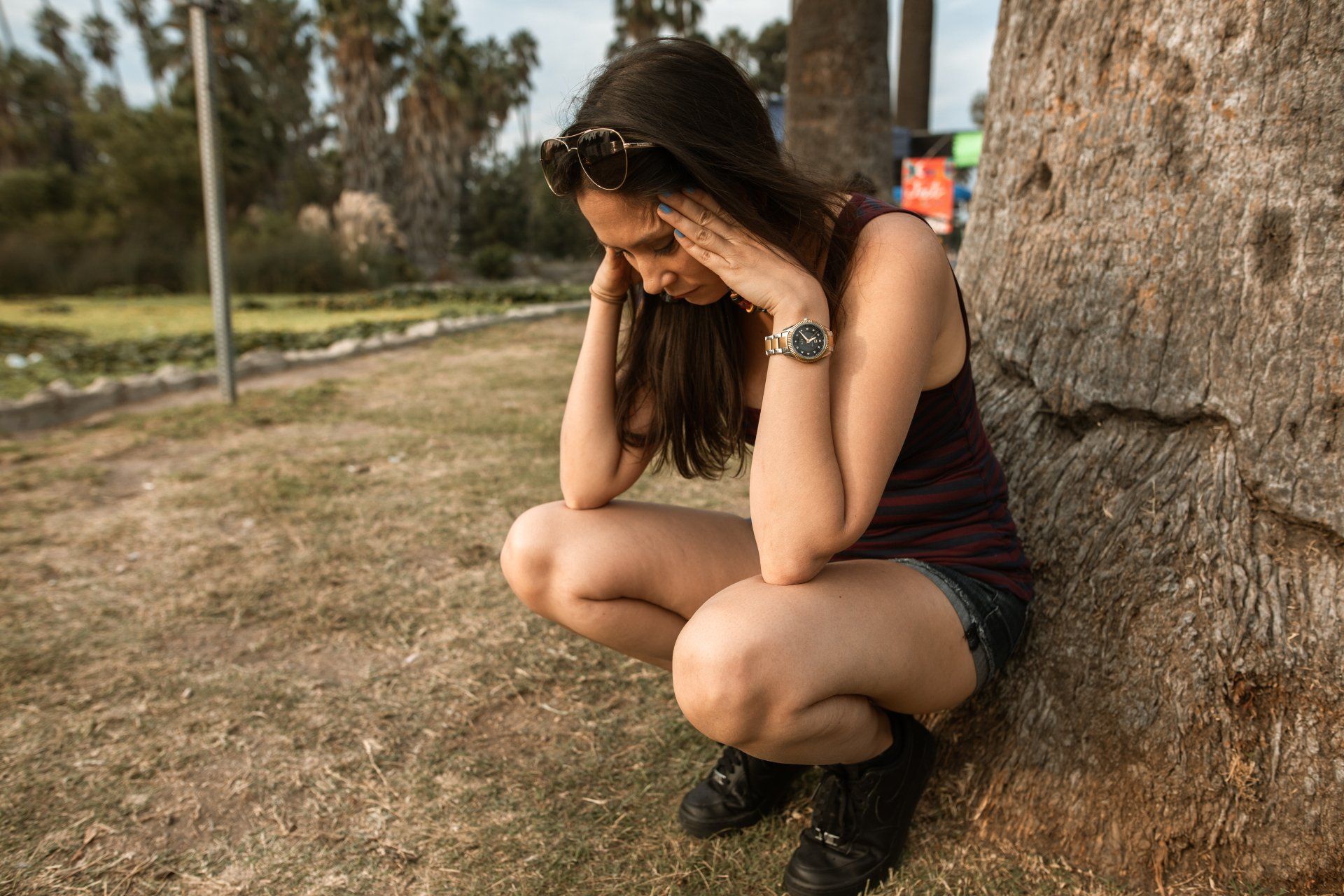
In today's fast-paced world, more and more people are struggling with their mental health. In fact, the Anxiety & Depression Association of America reports that "anxiety disorders are the most common mental illness, affecting 40 million adults ... every year." Even those who aren't diagnosed with an anxiety disorder feel anxiety symptoms such as nervousness or worry in their daily lives. These symptoms can intensify during major life events such as moving or getting a new job. Fortunately, one can explore practicing yoga as a means for stress management.
As someone who has been diagnosed with generalized anxiety disorder, I have explored several methods to relieve stress. And through my explorations, I have found that my yoga practice, especially when I pair it with breath work, has been key to managing my anxiety day to day. When I am feeling especially triggered, I have also found that holding a specific yin yoga pose and practicing pranayama (breath work) can help pull me out of an anxiety attack.
If you are someone who experiences anxiety, keep reading to learn how yoga helps soothe anxiety, and to find a yin yoga sequence carefully designed to ease anxiety symptoms, from an e-RYT yoga instructor.
How anxiety impacts your body
When you feel unsafe or threatened, hormones are released to prepare your body to fight or to flee. Your muscles tense, your heart rate increases, and you breathe more quickly. Think back to the last time you came to a quick stop while driving: you likely felt some of these symptoms.
Typically, once the threat is resolved, the stress drains from your body. Your heart and mind start to slow down once your body realizes you haven't hit the car in front of you. However, many of us experience feelings of anxiety about an uncertain future, and this (perhaps imaginary) threat never fully resolves. The body continues its stress response, which will take a toll on your body. Over time, chronic stress can lead to things such as a weakened immune system, high blood pressure, or chronic pain.
Managing anxiety with yoga
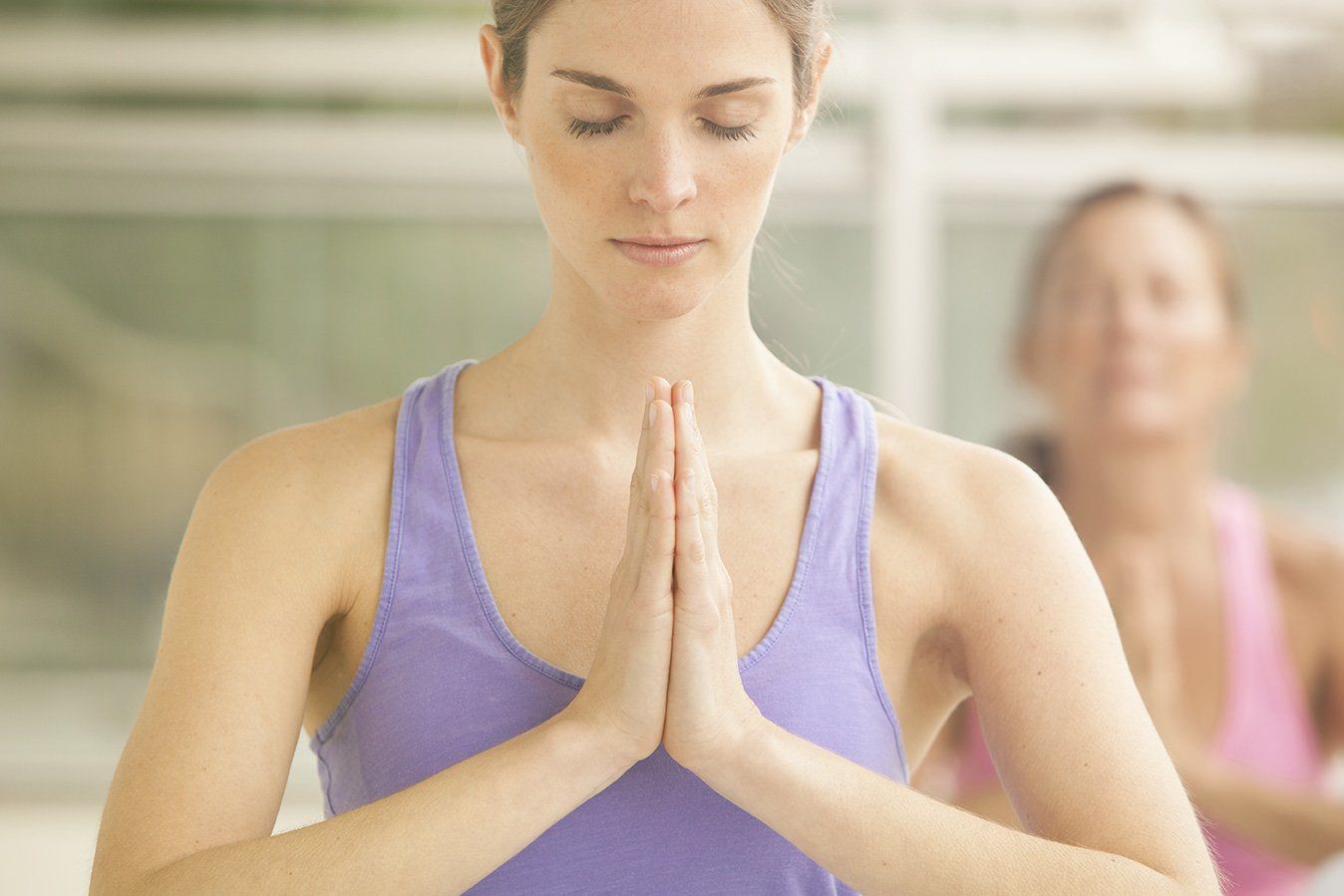
Fortunately, yoga has long been used as a tool to manage stress and anxiety. The breathing techniques and mindfulness practiced as a part of yoga can help to calm your nervous system on and off the mat. Here are a few ways in which a consistent yoga practice can help you soothe your anxiety:
- The active practice found in most vinyasa classes can help to move and discharge anxious energy.
- Calmer yin shapes, and those found at the end of a vinyasa practice, help to activate and strengthen your parasympathetic nervous system, the branch of your nervous system responsible for slowing down to rest your body and digest your food.
- Pranayama (breath control) practices can also help to stimulate the parasympathetic nervous system, calming both the heart rate and the mind.
- The meditation we do in corpse pose builds awareness of our thoughts and also can promote relaxation.
- Yoga allows you to practice coping with challenges on your mat, which can translate to confidence doing the same in your daily life.
Which style of yoga is best for anxiety?
Really, any kind of yoga can help soothe anxiety. The more active styles such as vinyasa or ashtanga yoga can help you move and discharge anxious energy from your body. These vibrant practices can serve as a good distraction while also reducing stress.
On the other hand, the more passive styles such as yin or restorative yoga can help you achieve a relaxation response more quickly, as the focus on the entire practice is on surrender and relaxation.
Whichever style you choose, aim to breathe deeply in your yoga session, releasing tension with each exhale. You might also choose a mantra to keep your mind busy, such as "I breathe in calm".
Yoga poses for anxiety
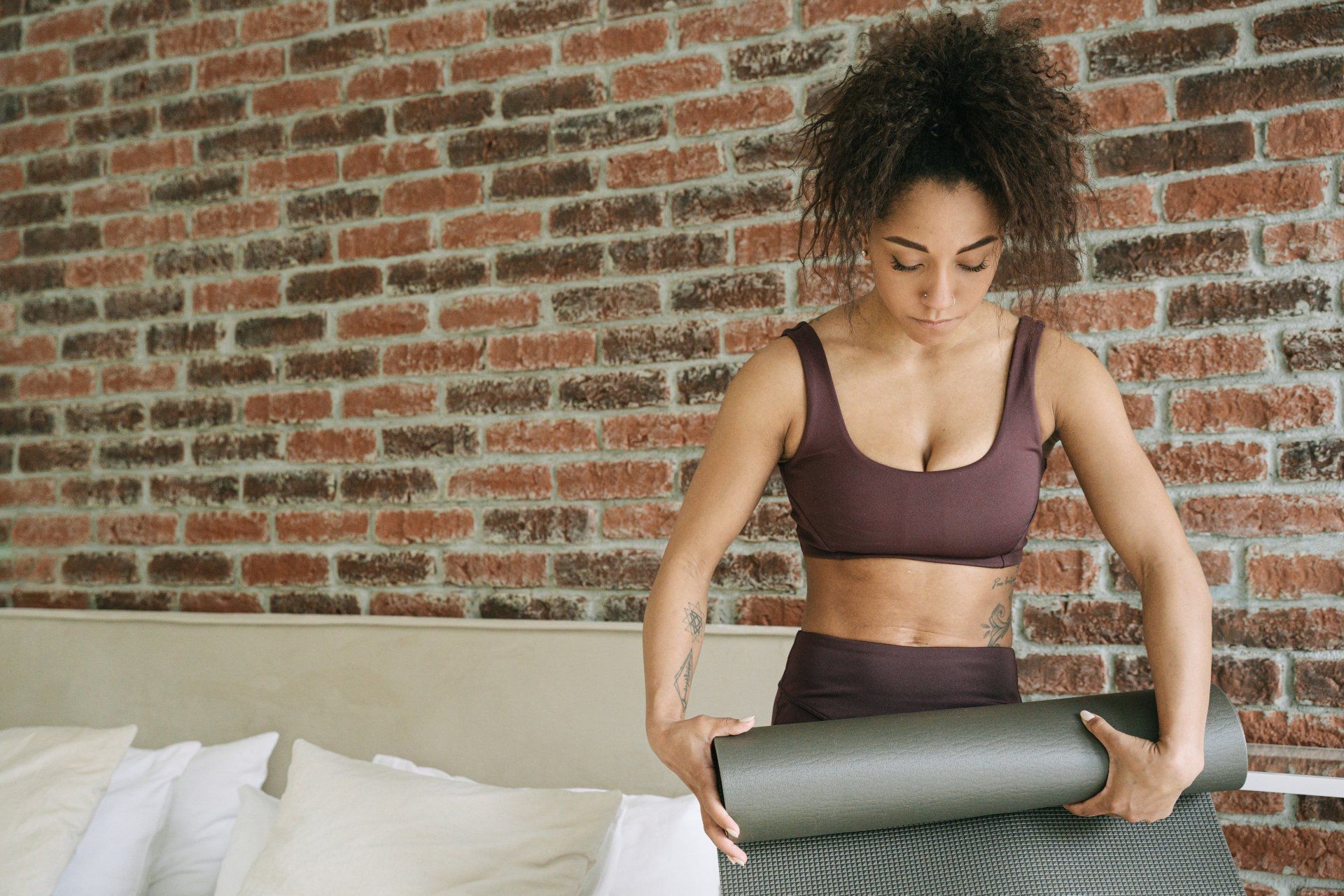
The following yin yoga sequence offers suggestions for gentle yoga shapes to promote relaxation and stress relief. Try this sequence any time your sympathetic nervous system seems activated, or daily as a part of your stress management routine.
For this practice, you might want the following props:
- Yoga mat or towel to practice on
- Blankets and/or towels
- A timer or watch
- Optional: yoga blocks, bolster
Find a quiet place to practice where you have plenty of space to stretch out, and where you won't be disturbed. Mute your phone and close the door. You might play gentle ambient music to set the stage for a relaxing class.
You can find an abbreviated version of this yin yoga practice here on my YouTube site.
Extended breath pranayama
- Start in a tall, comfortable seat. You are welcome to place a block or blanket under your hips. Ground down through your seat and lengthen your spine straight and tall. You may close your eyes or soften your gaze.
- Begin with a few deep breaths, releasing tension with each exhale.
- Now start to breathe in this pattern:
- Inhale for 4 counts.
- Pause on full for a beat.
- Exhale for 8 counts.
- Pause on empty for a beat.
- Continue with this pattern for 3 minutes, then return to normal breath.
- Gently open your eyes and roll out your neck. You might also swap the cross of your legs here.
Seated neck stretch
- Stay in your easy seat and draw three mindful circles with your neck in each direction, stopping with your chin towards your chest.
- Take a breath in, and with your exhale breath tilt your head to the left to stretch the right side of your neck. Lift your heart as you relax your jaw, neck and shoulders.
- Stay for 1-2 minutes, then gently release, drawing your chin back to your chest.
- Switch to the other side.
- When you are finished with both sides, release by rolling out your shoulders and neck. It might also feel nice to extend your legs long and circle out your ankles.
Butterfly pose (Bound angle)
- From your easy seat, bring the soles of your feet together and your knees out wide. You can stay seated on your blanket to give your hips a gentle lift. You can also place blankets or blocks underneath your knees so that your legs can relax in this shape.
- Take an inhale breath, and with your exhale gently round forward over your legs. You can support yourself by bringing your hands or forearms to the ground, or by placing a block or two under your forehead.
- Breathe into this gentle yoga pose and allow your upper body to relax for 3-5 minutes.
- When you are ready to release, gently lift back up into a seat. Use your hands to bring your knees together, and then make your legs straight. Feel the energy flow back into your hip joints and legs and any sensation related to this release.
- You can lean back into a gentle backbend and roll out your ankles to release this shape.
Caterpillar pose (seated forward bend)
- Keep your legs extended long in a straight line front of you. If you have tight hamstrings, you can place a rolled-up blanket or towel under your knees to reduce the intensity of this stretch.
- Take a deep breath in as you relax your legs, and start to round forward with your exhale breath.
- Like in butterfly pose, you can place your hands or forearms on the ground for support, or you can bring a block or bolster onto your legs to rest your forehead on.
- Remain calm and soak in this relaxing pose for 3-5 minutes.
- When you are ready to release, walk your hands towards your hips to gently lift your spine. Bring your hands behind you and lean back.
- You are welcome to bend your knees and windshield wiper them to release this shape.
Child's pose
- Make your way into a tabletop position, coming to all fours. Bring your feet together and your knees to about hip width.
- Take a breath in, and then exhale as you relax your hips back towards your feet. Reach your arms forward, resting your forehead on your yoga mat, a blanket, or a block. Alternatively, you can stretch that space between your shoulder blades by bringing your arms along your sides.
- One of the effective relaxation techniques in child's pose is to sway your forehead side to side, allowing the pressure of your mat, blanket, or block to give your third eye a calming massage.
- Relax your whole body as you hold this shape for 3-5 minutes.
- When you are ready to exit child's poses, bring your hands underneath your shoulders and return to tabletop position.
Cow pose
Cow and cat (below) are performed together.
- From tabletop, inhale and drop your belly towards your mat. Broaden your chest and lift your gaze and tailbone.
- Pull your hands back towards your knees to find more depth in this stretch.
- With your exhale breath, move into cat pose (below)
Cat pose
Cat and cow (above) are performed together.
- From cow pose, exhale and arch your spine. Drop your head and gaze back towards your thighs.
- Find more stretch here by pressing the ground away.
- Alternate between cow pose (inhale) and cat pose (exhale) for 5 rounds of breath.
- Once you are finished, return to tabletop.
Restorative bridge pose
- From tabletop, swing your legs in front of you and make your way to your back, taking your props with you.
- Bend your knees and walk your feet towards your hips, bringing your knees directly above your feet.
- Inhale, press into your feet to lift your hips. Slide a block, bolster, or several blankets under your hips.
- Exhale, rest your hips on your prop. Your prop should support your sacrum, which is a triangle shaped bone which rests where your hips and lower back meet. You should feel comfortable resting on your prop.
- If you'd like a deeper stretch to your chest and shoulders, bring your arms overhead.
- Rest here for 3-5 minutes.
- We will transition directly from restorative bridge pose to candlestick (below).
Candlestick pose (Legs up the wall)
Candlestick pose is an excellent pose for managing both anxiety and depression. We will use restorative bridge (above) as our starting position.
- Begin to hug your knees into your chest, and then extend your legs towards the ceiling.
- If you feel your hips are too high, you may move some or all of your support.
- If you have tight hamstrings, keep your knees bent. You can also bring your hands behind your thighs to help hold your legs up in the air.
- Relax here for 3-5 minutes, longer if you have time.
- To exit, return first to supported bridge pose, and allow your body to relax here for several rounds of breath.
- When you feel ready, gently lift your hips off of your props, scoot your props out of the way, and lower your hips down to your mat. You can windshield wiper your knees side to side to release your back and hips.
Corpse pose (Savasana)
Our final pose is corpse pose. This pose is used to close out most yoga practices, and it allows space for relaxation and meditation.
- Extend your legs and arms long on your mat. Take some time to adjust your position until you feel comfortable.
- You may use your props to make this shape feel more comfortable. Some yogis prefer a prop under their knees to release their back. Others enjoy a blanket over their belly for grounding.
- If your mind is still racing, you might listen to a guided meditation or gentle music during this time.
- Stay for as long as feels good for you.
Come out of your savasana gently. Take some deep breaths, and then start to move your body slowly, incorporating some easy stretches before you come to a seat and return to your day.
How to get started
Before you begin any movement practice, check with your doctor to ensure yoga is appropriate for you.
The safest and most effective way to learn yoga is with a certified yoga instructor. Seek out a yoga studio in your neighborhood (they often free or discounted classes for new students) or look for a private yoga teacher who can customize your practice.
If you enjoy my practices, I do offer in-person and virtual yoga instruction. You can
email me to find out more.
On the Blog
